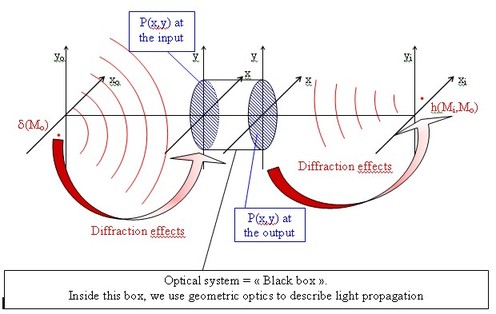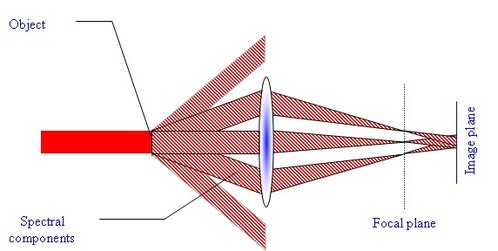
General scheme
We consider an optical system composed of several lenses (converging and diverging). This system is described as a “black box” characterized by its terminal elements : entrance pupil (finite aperture) and exit pupil (see figure V-1).

The light transmission between the entrance and exit planes is described by geometric optics. The pupils are determined by forming the geometric images of the smallest aperture of the system through all the elements that precede and follow that aperture. The two points of view that consist in considering that the image resolution is limited by the finite extension of the entrance pupil or the exit pupil are completely equivalent. Indeed, one pupil is simply the geometric image of the other pupil (by definition).
In 1873, Abbe showed that only a part of the spectral components of an object can go through the entrance pupil, because of the pupil finite extension. The components stopped by the aperture are the high frequency components of the object (see figure V-2).
